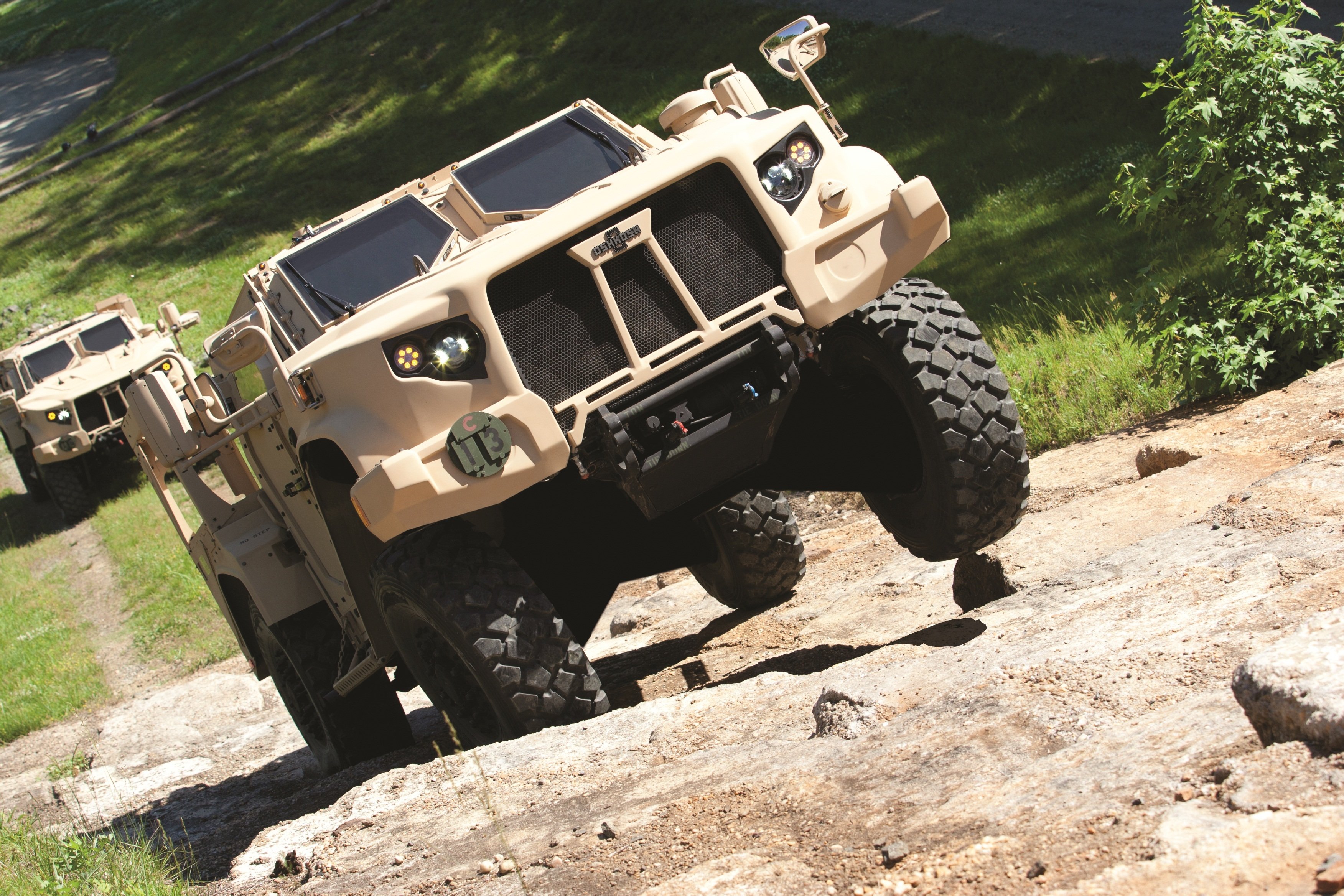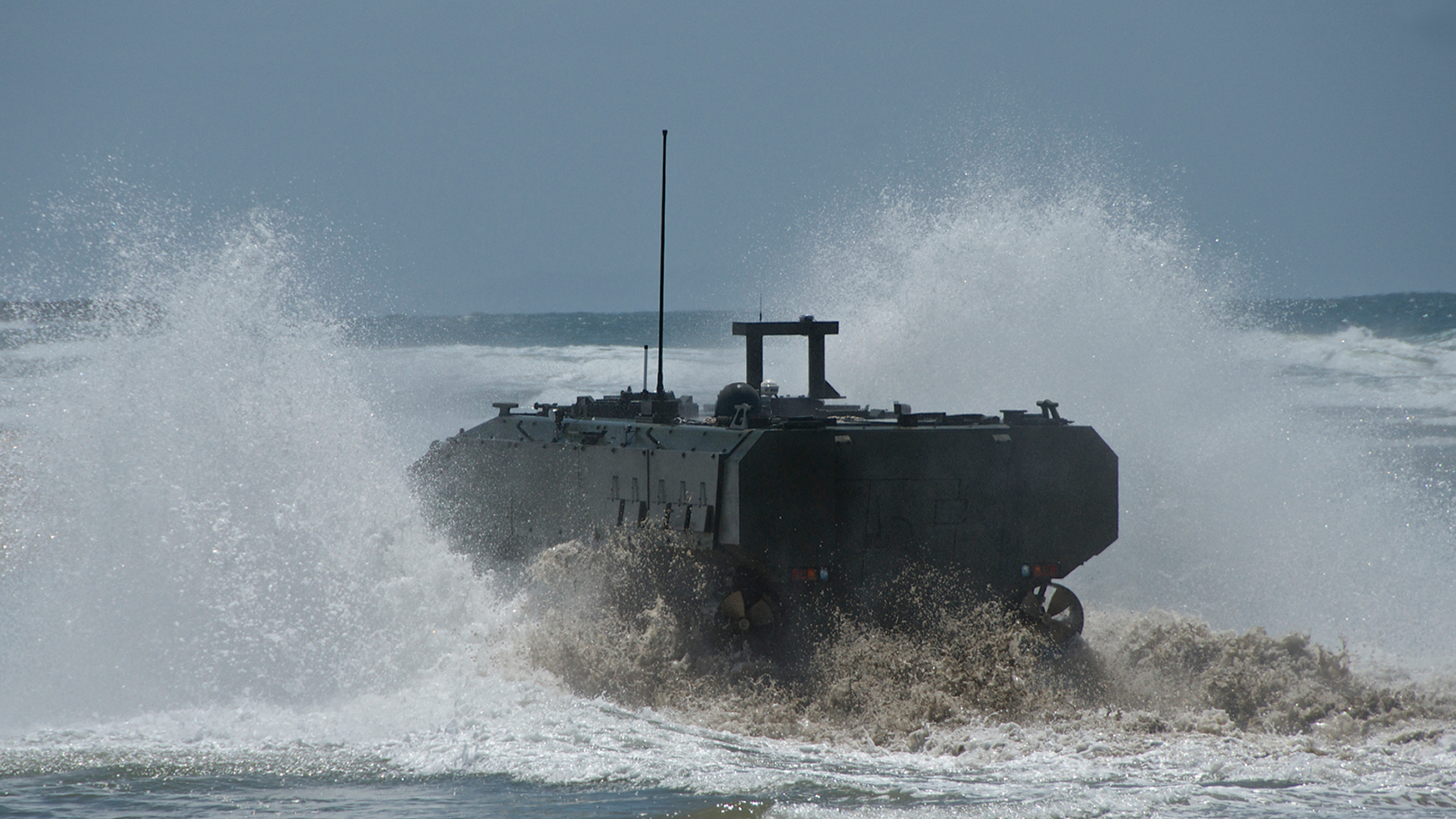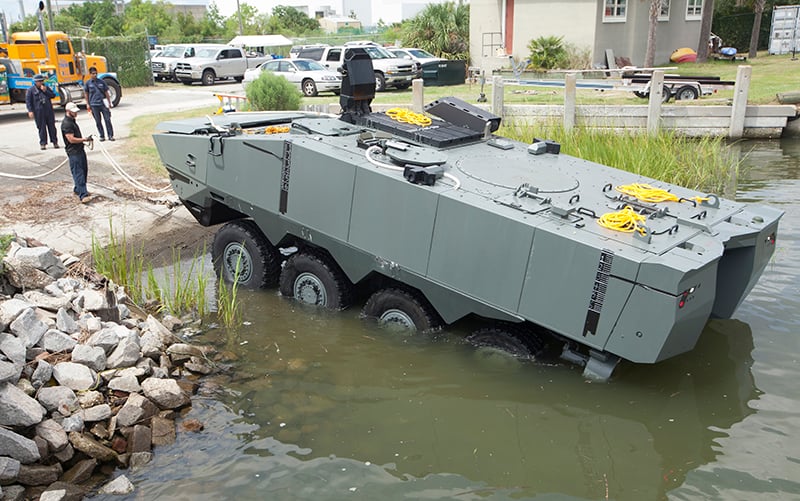
CAPITOL HILL – Contract award protests delayed the Joint Light Tactical Vehicle (JLTV) program by more than a year but had a “minimal” impact on the Marines’ Amphibious Combat Vehicle (ACV), service officials said Wednesday.
When Lockheed Martin protested the Army and Marine Corps’ decision to award Oshkosh Defense with a JLTV low-rate initial production contract last summer – first protesting to the Government Accountability Office, then to the Court of Federal Claims – what began as a 90-day pause spiraled into a major delay in declaring initial operational capability, Tom Dee, deputy assistant secretary of the Navy for expeditionary programs and logistics management, told the Senate Armed Services seapower subcommittee on April 13.
“That 90-day delay cascaded into a further delay in testing because of test range availability and testing schedules, so a 90-day delay grew into about a six or eight month delay just because of now the difficulty of rescheduling the test phase that we were going to do – which then impacts the decision date for the full rate production decision, which in turn puts our funding out of phase” for buying and fielding the vehicles,” he said. All told, “a 90-day protest period resulted in about a year delay in achieving IOC.”
Due to a little luck in the timing of the protest, Dee said a similar protest in the ACV program – in which General Dynamics Land Systems protested to the GAO – resulted in a “fairly minimal impact.” Dee said the ACV program is coming in at or below cost so far and is “a little behind in schedule now because of the protest. Both BAE Systems and SAIC are leaning forward to try to erase the couple-month delay, he said, and because the delay didn’t push any funding needs into a different fiscal year, “we don’t expect any major or significant delays as a result.”

Dee said during the hearing that the ACV program, which sought non-developmental vehicle designs primarily from companies that participated in the canceled Marine Personnel Carrier program, has had a lot of risk taken out of the program by bringing two vendors into the engineering and manufacturing development (EMD) phase and by taking an incremental approach to fielding new capability.
Cost has come down “significantly below our previous service cost position, so we were very successful in that,” he said.
“We’ve got a very abbreviated EMD, engineering and manufacturing development, phase which will lead to testing, developmental testing, as well as the beginnings of some operational tactics development, which will allow us to do a downselect in [Fiscal Year 2018] and go forward then with low-rate initial production.”
The first ACVs, called ACV 1.1, will only be required to cross rivers and smaller bodies of water, with a focus on land operations. ACV 1.2 will bring a ship-to-shore swim capability, though industry and Marine Corps officials have said the two competing 1.1 vehicles already have robust swim capabilities. ACV 1.2 will also introduce a command and control variant and a recovery variant, whereas ACV 1.1 is designed just for personnel transport. A potential ACV 2.0, likely 10 to 20 years down the road, may bring a high water speed swim capability – similar to the Landing Craft Air Cushions (LCACs) that plane up on top of the water instead of swimming through the water at a slower speed like the Landing Craft Utility (LCU).
During the hearing, Lt. Gen. Robert Walsh, deputy commandant for combat development and integration, said the Marines might start looking at ACV 1.2 requirements in 2018 and start budgeting for the program in 2019.

Walsh told reporters after the hearing that the Marine Corps has a requirement for 10 ACV or legacy Amphibious Assault Vehicle (AAV) companies – one company to support each of 10 battalions. Because current operational plans for joint forcible entry call for four battalions to go in in the first assault echelon, the Marine Corps is upgrading 392 AAVs to support four battalions. The Marines will then buy 204 ACV 1.1s for the next two companies, and then 490 ACV 1.2s for the final four battalions – which are reserve companies, he said, but it is unclear yet if the ACV 1.2s will actually be fielded in reserve companies first or if the vehicles will get shuffled around.
Current plans call for the ACV 1.1s to participate in the assault follow-on echelon, coming into theater on prepositioning ships and going ashore either by surface connectors like the LCAC and LCU or by the ships pulling up to piers. Because the two competing vehicles already show promise in their swim capability, “if they can swim in, we’re going to build up combat power faster, but it’s not a requirement,” Walsh said.
As for ACV 1.2’s role in a joint forcible entry operation, “I can’t say right now that the requirement’s definitely going to be go come from whatever range; it’s going to probably be a ship-to-shore requirement in the 1.2,” Walsh said, but those details won’t be finalized for another couple years.





